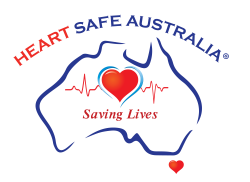10 benefits of having access and using a defibrillator
A defibrillator is a medical device that delivers an electric shock to the heart in order to restore its normal rhythm.
These devices are commonly used in emergency situations, such as when someone has suffered a cardiac arrest.
While defibrillators have been around for many years, their effectiveness and popularity have increased significantly in recent times, thanks to advancements in technology and increased public awareness.
In this article, we will explore the top 10 benefits of using a defibrillator.
1. Saves Lives: The primary benefit of using a defibrillator is that it can save lives. Cardiac arrest is a leading cause of death in the United States and around the world. Every minute that passes without treatment reduces the chances of survival by 7-10%. By delivering a shock to the heart, a defibrillator can restore a normal rhythm and increase the chances of survival.
2. Easy to Use: Modern defibrillators are designed to be easy to use, even for someone without medical training. They provide clear instructions and often come with visual aids to help users place the pads correctly. This makes them a valuable tool in situations where time is of the essence.
3. Quick Response: One of the key benefits of defibrillators is that they provide a quick response. In an emergency situation, every second counts. Defibrillators can be used within minutes of a cardiac arrest, increasing the chances of survival.
4. Portable: Defibrillators are now available in a portable format, making them ideal for use in settings outside of a hospital. This includes public spaces such as airports, sports stadiums, and shopping malls.
5. Easy Maintenance: Defibrillators require little maintenance, making them an affordable option for businesses and organizations. Many models are designed to perform self-tests, ensuring they are always in working order when needed.
6. Improved Survival Rates: Studies have shown that the use of defibrillators can improve survival rates in cases of cardiac arrest. The American Heart Association estimates that early defibrillation, within the first 3-5 minutes after collapse, can increase survival rates by as much as 60%.
7. Reduced Brain Damage: When a person suffers a cardiac arrest, their brain can be deprived of oxygen for an extended period of time, leading to brain damage. The use of a defibrillator can restore a normal heart rhythm, reducing the risk of brain damage.
8. Reduces the Need for Hospitalisation: Early defibrillation can also reduce the need for hospitalization, as it can prevent further damage to the heart and other organs. This can result in significant cost savings for individuals and healthcare providers.
9. Improved Quality of Life: For those who survive a cardiac arrest, the use of a defibrillator can significantly improve their quality of life. It can prevent long-term complications such as heart failure, which can lead to a reduction in mobility and overall health.
10. Increased Public Awareness: The increased availability and use of defibrillators has led to greater public awareness of the importance of prompt action in the event of a cardiac arrest. This increased awareness has led to more people being trained in CPR and improved survival rates overall.
In conclusion, the use of a defibrillator is a critical component in the management of cardiac arrest. It provides a quick response, easy maintenance, improved survival rates, and can reduce the risk of long-term complications. As such, the benefits of using a defibrillator cannot be overstated.
If you are in a public space or workplace that does not have a defibrillator, consider advocating for one to be installed, as it could save a life.
Find out more about our 11 Lifesaving Programs.
Contact Heart Safe Australia for find out more and get equipped with a defibrillator in your community, workplace, school, neighbourhood, home, vehicle and more.

